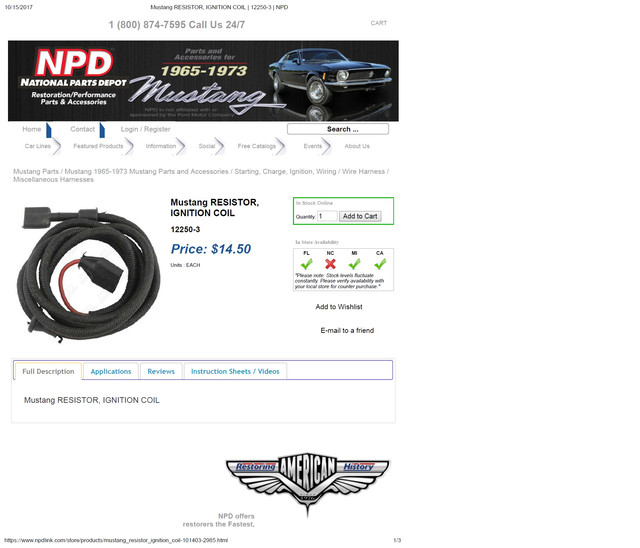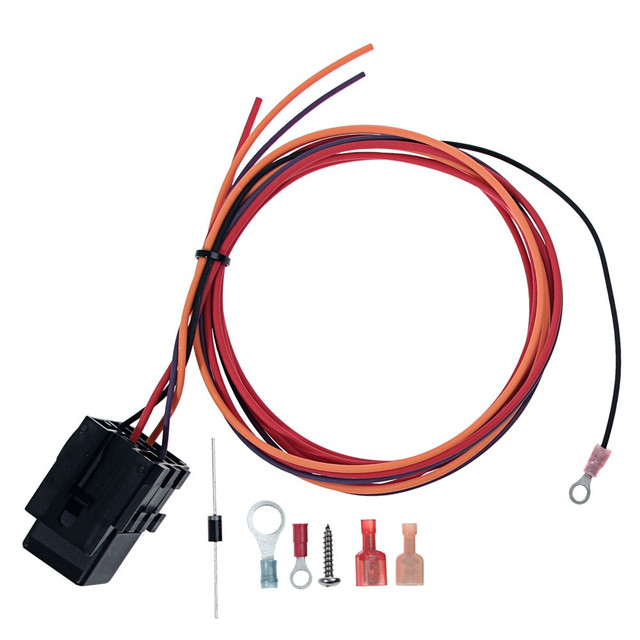jmassey6
Member
- Joined
- Oct 15, 2017
- Messages
- 12
- Reaction score
- 0
- Location
- Santa Clarita, CA
- My Car
- 1973 Ford Mustang Mach I Fastback, 351C-2V, AT, PS, AC, dual exhaust
Hello all:
In reviewing the National Parts Depot website, I found a resistor wire entry/listing and was wondering if my 1973 Ford Mustang Mach I with 351C and C6 needed this part. Below is the part in question. Unfortunately, I cannot locate either connection points for the part in my wiring harness or engine bay and therefore, I wasn't sure if I needed it. Any help would be greatly appreciated. Thanks!
-Jeff M.
:thankyouyellow:

In reviewing the National Parts Depot website, I found a resistor wire entry/listing and was wondering if my 1973 Ford Mustang Mach I with 351C and C6 needed this part. Below is the part in question. Unfortunately, I cannot locate either connection points for the part in my wiring harness or engine bay and therefore, I wasn't sure if I needed it. Any help would be greatly appreciated. Thanks!
-Jeff M.
:thankyouyellow:






































